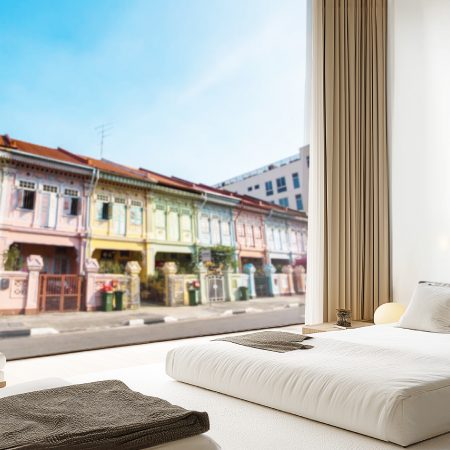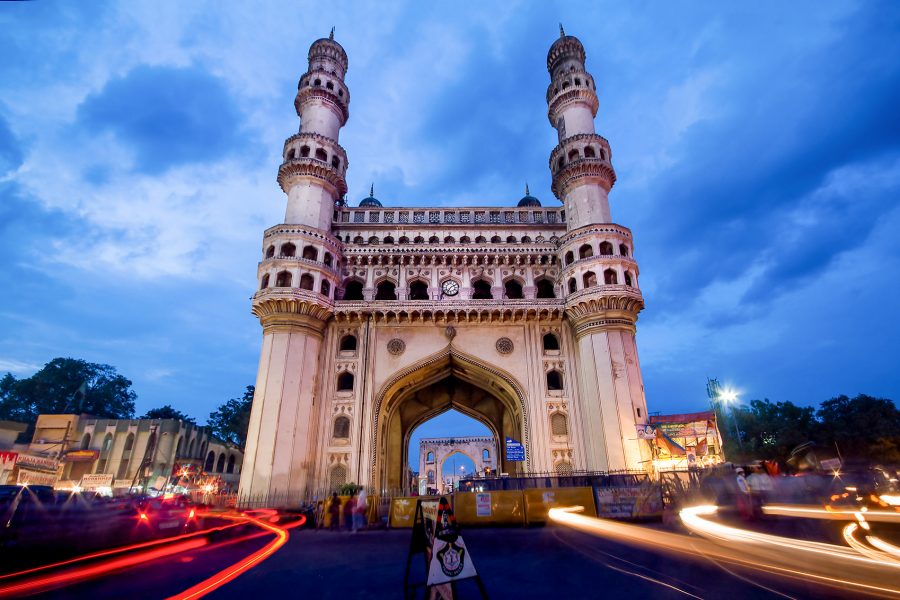Let’s start where most stories about India should begin – with food.
During my first visit to India five years ago, my in-laws cheerfully fed me chicken curry mopped up with rotis and parathas in the coastal town where they live, north of Mumbai.
Now I’m in Hyderabad, in India’s southern Telangana state, and I’m still eating. Breakfast at the richly decorated Celeste restaurant, in the 19th century Taj Falaknuma Palace, is a masala omelette chased with a breakfast dosa – the chef’s suggestion – smeared thickly with coconut paste, tamarind and a puddle of ghee.
Hyderabadi history begins with Muhammad Quli Qutb Shah, who founded the city in 1591 and built the Charminar. Today, the Charminar is an ornate gyratory, with scooters, autorickshaws and cart-pushing locals flogging strips of gum, cheap colourful bangles and pomegranates wheeling around it.
The city of Hyderabad has taken a high-speed line to industrialisation. After Bengaluru, Hyderabad’s Hitec City is India’s second largest tech office cluster. This part of Hyderabad hosts the offices of Microsoft, Amazon and Facebook, giving rise to the portmanteau “Cyberabad”.
At the same time, Hyderabad is trying to hold onto its story. An act passed in parliament in 2017 promised to protect Telangana’s heritage structures and sites, and private groups such as Taj Hotels are restoring centuries-old palaces like Falaknuma. I ask my guide, John, a proud Hyderabadi, why Hongkongers should visit this city over Delhi or Mumbai. He says: "There’s so much more to see here. There’s so much more history.” And for a first time, or even fifth or 17th-time visitor to India, Hyderabad is an easy city: more compact than Delhi, less chaotic than Mumbai but with more heritage sights than both.
Here are eight things not to miss in Hyderabad.
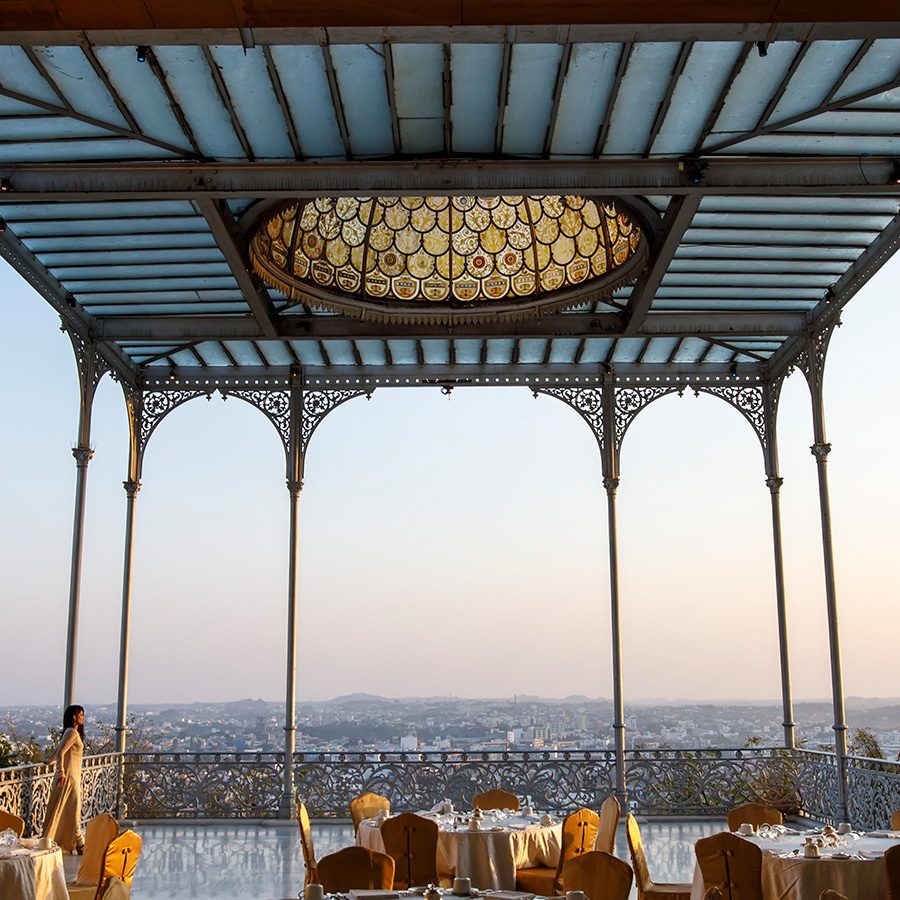
Credit: Design Pics Editorial/Getty Images
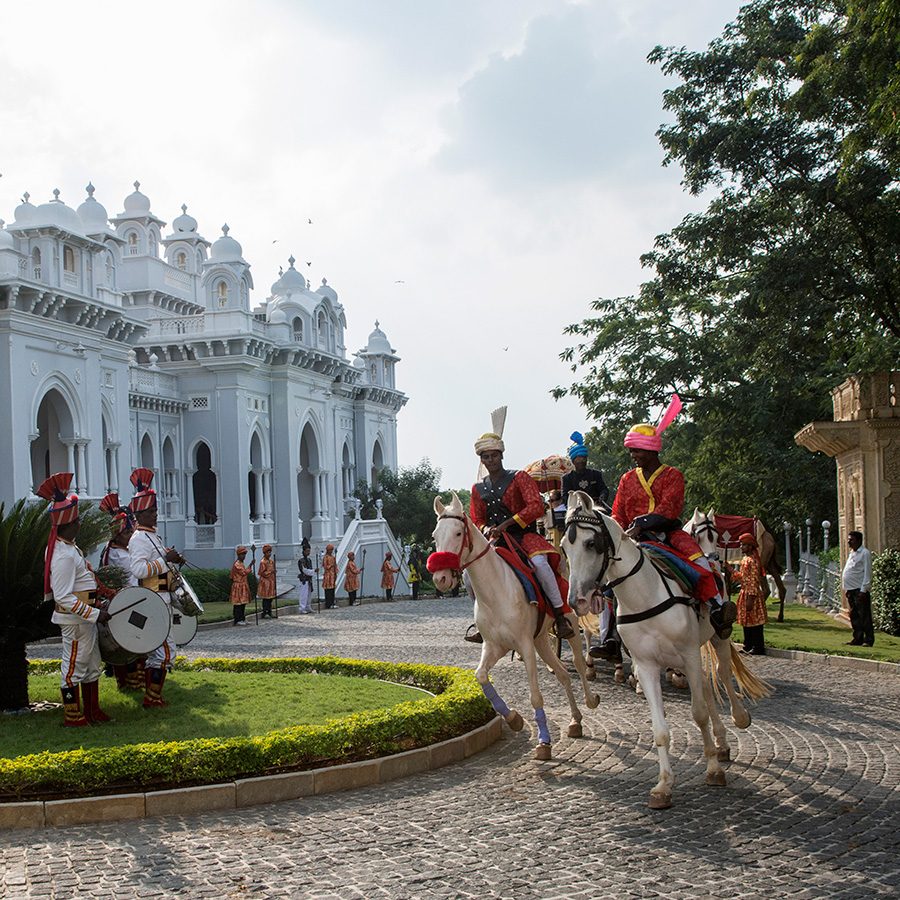
Credit: Thierry Falise/Getty Images
1. The view: from Falaknuma Palace
Falaknuma Palace sits 600 metres above sea level at the second-highest point of Hyderabad city after the hilltop Golconda Fort. Its name translates to “just like the sky”, which is why this palace – a 19th-century Nizam’s residence, now a turbo-luxe heritage hotel – is painted duck-egg blue.
Its tiled balcony offers the best view of Hyderabad: stretching past the palace’s mown lawns, over its trotting peacocks and tamarind trees, past the old city with its minaret tips and the Golconda hills to the towers of Hitec City. Falaknuma’s interiors are just as impressive, featuring Nizam-era furniture, paintings of East India Company heavyweights lined up the staircase and 5,970 books that belonged to the Nizams, including one written by a Titanic survivor.

Credit: Waqar Hussain/Getty Images
2. The taste: Shadab’s biryani
The lunchtime scene at Shadab consists of waiters bumping down bowls of biryani onto blue-and-white-checked tablecloths in a dim dining room, complete with a majestic grandfather clock.
Hyderabad’s signature dish migrated south with the Mughals and was cooked in Nizam palace kitchens. You’ll find biryani all over town, but Shadab, near the Charminar, is an especially friendly haunt: lively atmosphere, faintly art deco exterior and giant brass bowls of trademark dum biryani – where the meat (typically chicken or mutton) is steamed together with the rice.

Credit: Nimrah Café & Bakery
3. The sip: Irani chai
Daily from 4am to midnight, Hyderabadis fill the plastic tables at Nimrah Cafe & Bakery in front of the Mecca Masjid. They’re here to dip hot-from-the-oven Osmania biscuits into puckered cups of Irani chai: another Hyderabadi speciality.
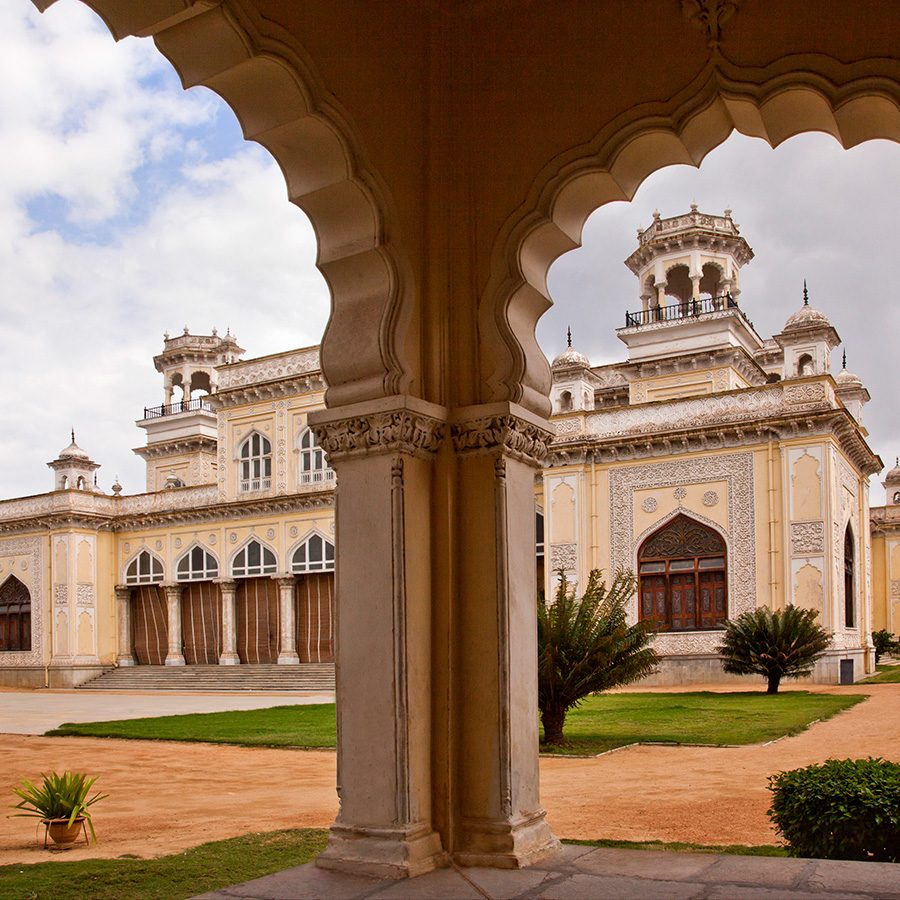
Credit: UniversalImagesGroup/Getty Images
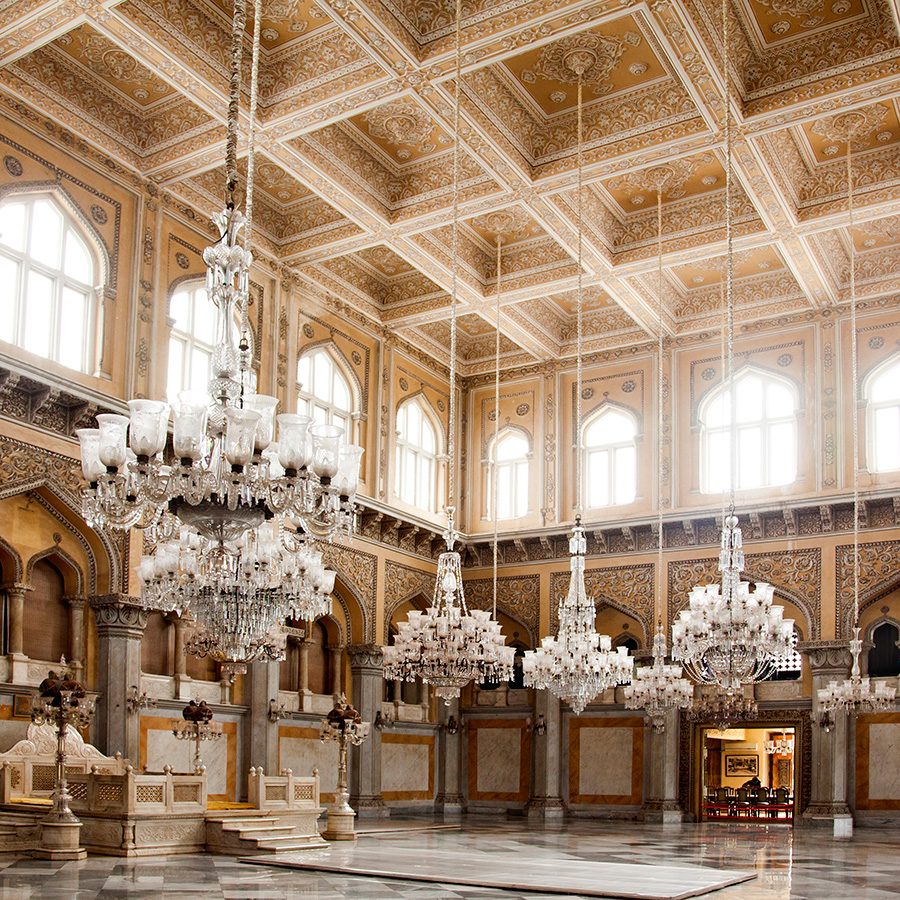
Credit: uniquely india/Getty Images
4. The colour: the yellow of the Chowmahalla Palace
In Hyderabad, everything comes with a story. Legend says that the first Nizam bunked with some Sufi saints en route to taking up the city’s throne. Upon leaving, a saint thrust some bread wrapped in yellow fabric into his hands.
This is why the durbar hall, now dusty but impressively chandeliered, is painted a pale yellow. Elsewhere in this palace, the official Nizam residence which took 119 years to build, is a blend of Persian, European and Rajasthani arches, coconut palms and intricate fountains that once sprayed rosewater.
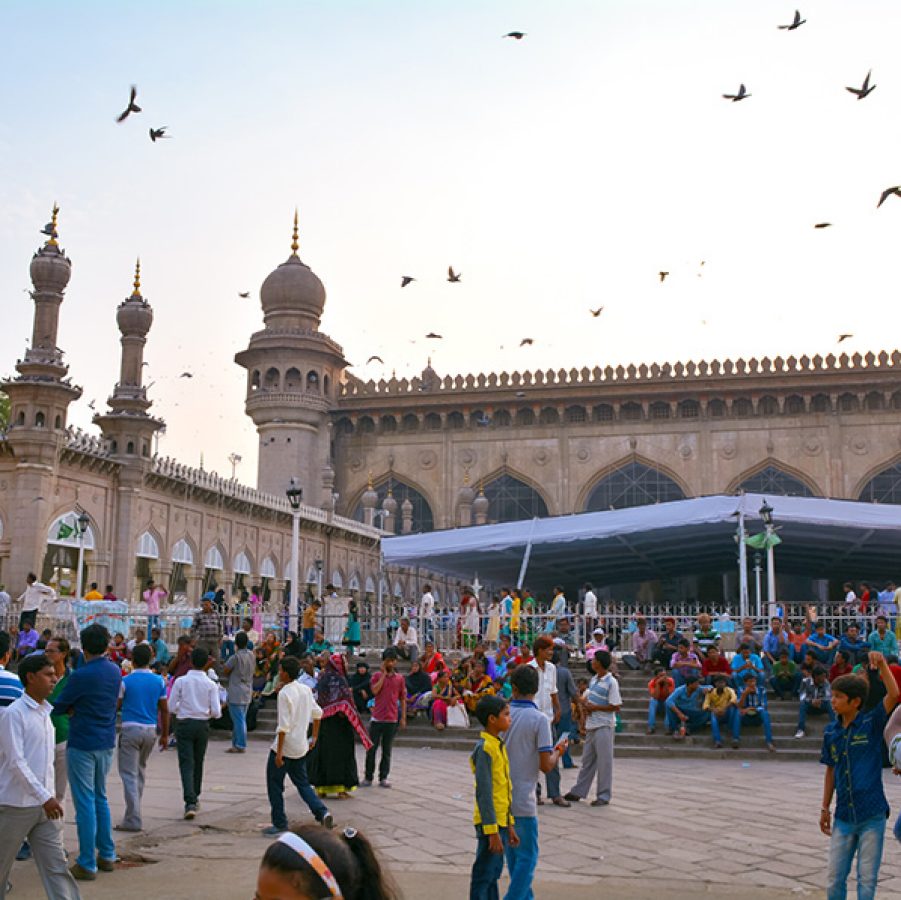
Credit: RK Balaji/Getty Images
5. The sound: the call to prayer from the Mecca Masjid
Hyderabad is a study in sound: Asian quails whooping, the throat of a scooter revving, the jangle of bangle sellers through Charminar – and the daily calls to prayer, most reverentially from the slate-grey Mecca Masjid, so-named because soil was brought from Mecca to make the bricks. This mosque, which dates to 1693, is where the Nizams of Hyderabad are buried.
6. The bar hop: Jubilee Hills
The Banjara Hills-Jubilee Hills conurbation has become the social sponge for the Hitec City after-work overspill. Start with a Moscow mule with homemade tamarind syrup at the Park Hyatt Hyderabad’s Italian restaurant Tre-Forni , before heading to The Moonshine Project , complete with the ultimate hipster accoutrement: an Airstream trailer.
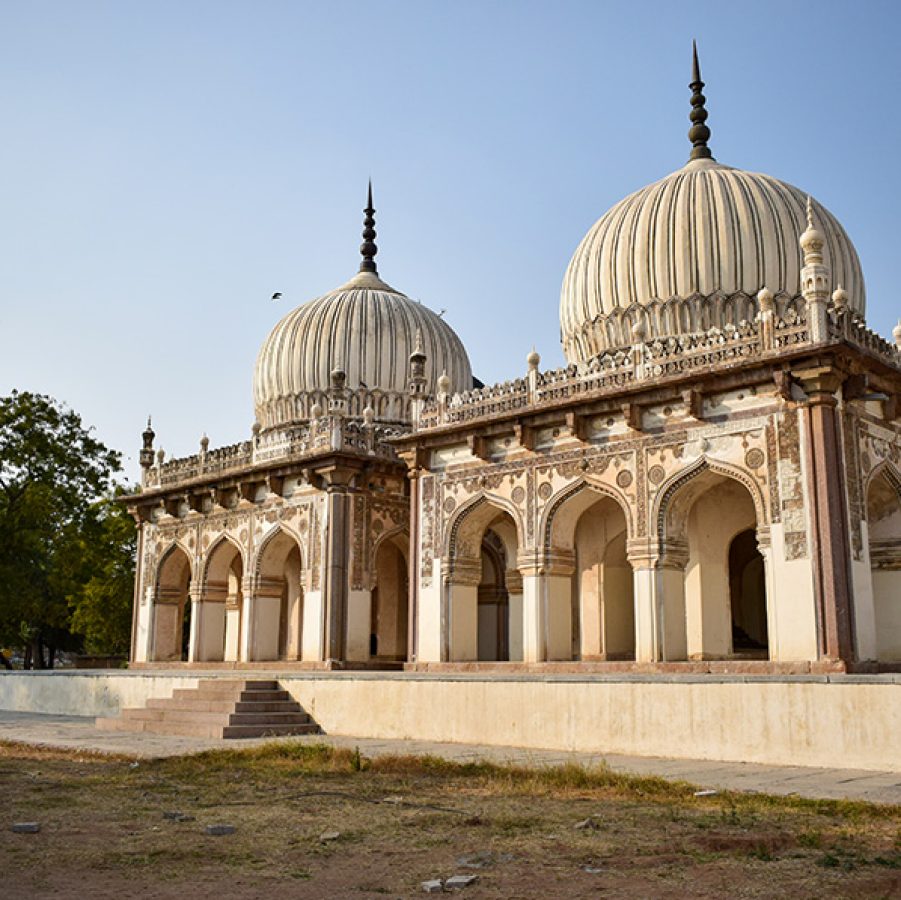
Credit: Mohammed Sohail Khan/Getty Images
7. The shape: Qutb Shahi Tombs
These weathered off-white domed crypts house the kings and Sufi saints of the Qutb Shahi dynasty. From a distance, they look like chess pieces. Up close, this tranquil spot has beautifully ornate Islamic arches, floral medallions and archways.
8. The movement: art in Banjara Hills
Fast-gentrifying, leafy Banjara Hills is where you’ll find one of Hyderabad’s new-school pursuits: art. Check out cosy Kalakriti , a spacious art gallery-cum-café decorated with interactive exhibitions, installations and lively watercolour paintings; or nearby Lamakaan , a cultural space with a shaded amphitheatre. Stop by Almari , a breeze-blocked fashion shop that offers modern interpretations of classic Indian clothing: beaded clutch bags, gilded pendants and silk dresses.
Where to stay
Park Hyatt Hyderabad is a modern, business traveller-friendly luxury hotel in Banjara Hills. Spacious rooms overlook a tall plant-filled atrium. Meanwhile, the Taj Falaknuma Palace is considered the grandest hotel in Hyderabad, with 60 rooms and suites dressed in Nizam-era fabrics. Don’t miss the daily palace tour at 5pm, when you can explore the rich history of this remarkable property.
This story was originally published in September 2017 and updated in December 2024.
More inspiration
Hyderabad travel information
- China – the Chinese Mainland, Hong Kong SAR, Macao SAR and Taiwan Region
- Hong Kong SAR - English
- Chinese Mainland (China) - English
- Taiwan, China - English
- 香港特別行政區 - 繁體中文
- 中国內地 - 简体中文
- 中國台灣 - 繁體中文
- Africa
- South Africa - English
- Asia
- Bangladesh - English
- Korea - English
- Singapore - English
- Cambodia - English
- 한국 - 한국어
- Sri Lanka - English
- India - English
- Malaysia - English
- Thailand - English
- Indonesia - English
- Maldives - English
- ประเทศไทย - ภาษาไทย
- Indonesia - Bahasa Indonesia
- Myanmar - English
- Vietnam - English
- Japan - English
- Nepal - English
- Việt Nam - tiếng Việt
- 日本 - 日本語
- Philippines - English
- Australasia
- Australia - English
- New Zealand - English
